10 fascinating facts about the ocean for kids and adults
How conversant are you with the Ocean? The ocean is the largest water body on the Earth, with many fascinating facts, yet it has not been explored fully. According to Kat Millage, a Marine Scientist for National Geographic Pristine Seas, the ocean plays a vital role in Earth’s climate, harbors mysterious deep-sea species, and even features corals that glow in the dark. Discover some of the most fascinating about the ocean.
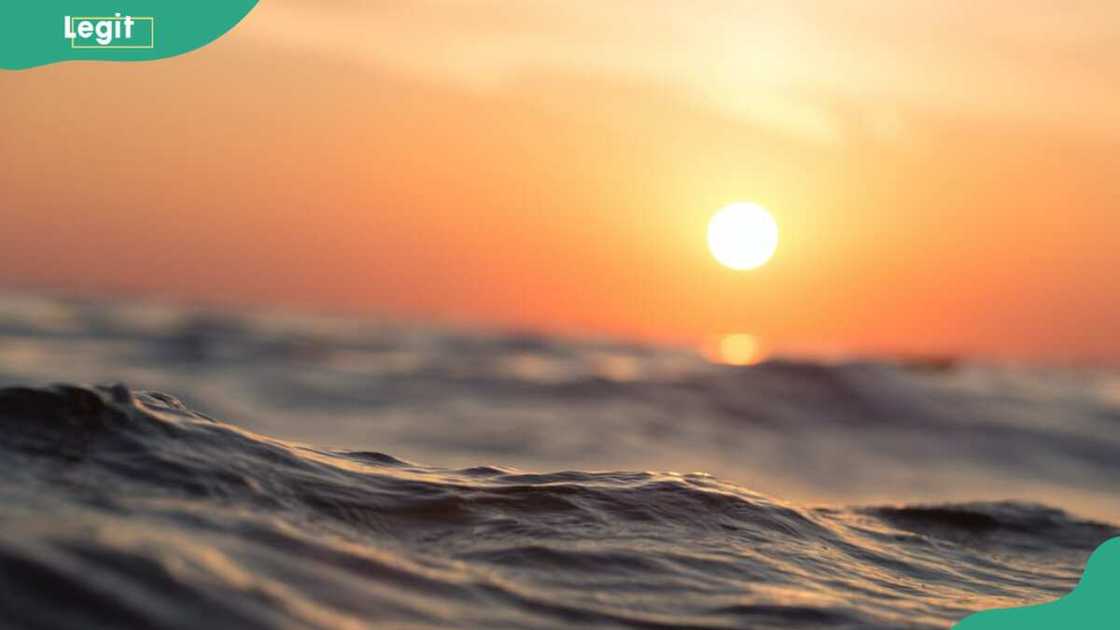
Source: UGC
TABLE OF CONTENTS
- Key takeaways
- 10 facts about the ocean
- 1. The ocean covers a significant portion of the Earth’s surface
- 2. The ocean has a majority of the critical minerals
- 3. The ocean has a massive deposit of salt
- 4. A small portion of the world’s ocean has been mapped
- 5. The ocean floor is not static
- 6. The longest mountain range is in the ocean
- 7. The ocean is the world’s biggest museum
- 8. There are lakes and rivers under the ocean
- 9. Most of the oxygen comes from the ocean
- 10. The majority of life on Earth is aquatic
- Unique facts about the ocean, especially for kids
- Recent discoveries in marine biology and oceanography
- Rarest and most unique creatures in the ocean
- How deep is the ocean?
- Facts about the Pacific Ocean
- Facts about the Atlantic Ocean
- How does the ocean impact climate and weather?
- FAQs
Key takeaways
- The ocean holds 37 out of 50 critical minerals.
- Approximately 94% of Earth’s living species are aquatic, with many yet to be identified.
- Exploring the ocean presents challenges such as immense pressure, corrosive salt water, and darkness.
- Human activities such as ship engines, and oil drilling contribute to underwater noise pollution.
The ocean beaches are the best places for many people to have fun and relax while on vacation. However, many people are oblivious to facts about the ocean that would make them appreciate the natural resources more. The five oceans on Earth, the Pacific, Indian, Atlantic, Arctic, and Antarctic, have the most water and support significant plant and animal life.
10 facts about the ocean
Since ancient times, ocean explorations have revealed a lot. However, there is still much to learn from the oceans, as only a small part has been explored. Here are some interesting facts about the ocean for kids and adults.
1. The ocean covers a significant portion of the Earth’s surface
The ocean water covers approximately 71 percent of the Earth’s surface. It is estimated to hold about 96.5 percent of the Earth’s water, translating to about 320 million cubic miles. Water is never still and changes form and place due to the water cycle. Therefore. The world’s water is well-distributed in different forms in different places.
2. The ocean has a majority of the critical minerals
A critical mineral is a non-fuel material with a high economic value or a huge significance in national security. They are precious and rare and may not be available in large deposits. 37 out of 50 critical minerals are found in the ocean. The valuable minerals include cobalt, lithium, antimony, manganese, and titanium.
3. The ocean has a massive deposit of salt
You have probably wondered why the ocean is salty. The ocean has enough salt to cover the Earth’s surface, forming a layer of approximately 500 feet. The salt is washed away from rocks on land by rainwater into the ocean. Some of the salt is pushed to the ocean by hydrothermal forces on the ocean floor.
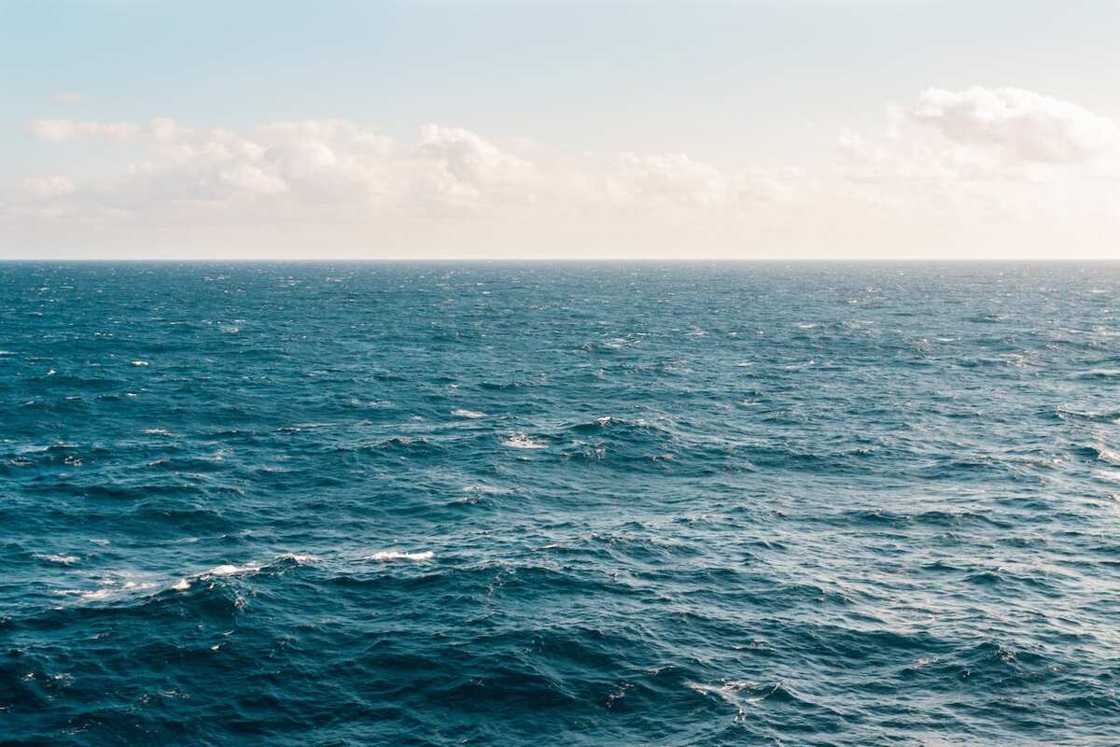
Source: UGC
4. A small portion of the world’s ocean has been mapped
Even though humans have lived on the Earth for a long time and explored it, little is known about the ocean. It is estimated that only five percent of the ocean has been seen, and less than 20 percent of it has been mapped. Therefore, there is still a lot to learn about the ocean.
5. The ocean floor is not static
The ocean floor, oceanic crust, comprises basalt and other igneous rocks. Tectonic forces move the oceanic crust, allowing molten magma to enter the ocean floor and form mid-ocean ridges. The movement of tectonic plates causes the ocean floor to change its features as more magma accumulates and forms mid-ocean ridges.
6. The longest mountain range is in the ocean
In South America, the Andes is the longest chain of mountains globally, covering about 7,250 kilometers. However, it is nothing compared to the mid-ocean ridge spanning approximately 40,389 miles (65,000 kilometers).
10 percent of the mid-ocean ridge is above water and 3 kilometers high. The ridge’s width ranges between 1000 kilometers and 1500 kilometers. The mid-ocean ridge was discovered in the 1950s.
7. The ocean is the world’s biggest museum
While this seems interesting, it is one of the scary facts about the ocean. There are numerous shipwrecks on the ocean floor. In ancient times, ships explored the world and transported goods to different places.
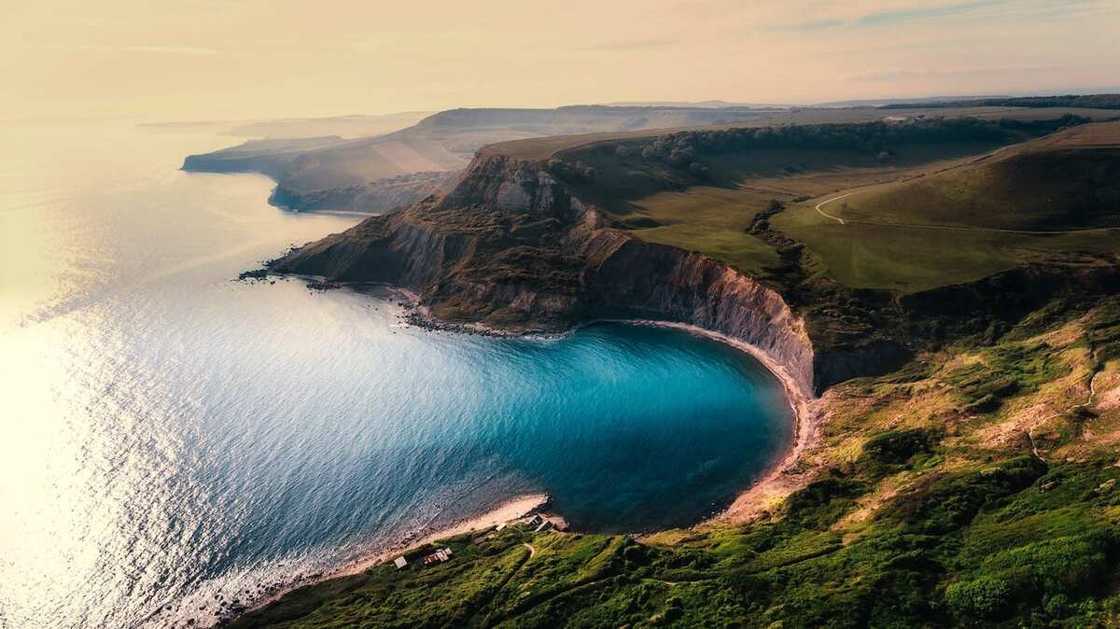
Source: UGC
Many ships with precious items and artifacts sunk into the ocean, forming underwater museums. Today, touring underwater museums has gained popularity as people are curious to see the items on the ocean floor.
8. There are lakes and rivers under the ocean
It might seem unreal that rivers and lakes exist in the ocean. The rivers and lakes in the ocean form when salt water and hydrogen sulfide combine and become denser than the rest of the water. The rivers and lakes vary in size and are quite similar to those on the land, with shorelines and waves.
9. Most of the oxygen comes from the ocean
Perhaps you know how plants like trees use photosynthesis to convert carbon dioxide and water into oxygen. However, most of the oxygen used on the Earth is not from land plants but from ocean plants. Ocean plankton are the largest oxygen producers, with scientists estimating that 50 percent of the Earth’s oxygen comes from them.
10. The majority of life on Earth is aquatic
Approximately 94 percent of the Earth’s living species live in ocean waters. Surprisingly, about two-thirds of them remain unidentified. Ocean life comprises plants, animals, and other living organisms, and they influence the Earth’s ecosystem significantly. Due to the ocean's vastness, many species remain undiscovered.
Unique facts about the ocean, especially for kids
Many people think of the ocean as a peaceful and quiet place. According to Kat Millage, a Marine Scientist for National Geographic Pristine Seas, in an interview, said that the ocean is full of noise. She explains:
Scientists have found that many marine mammals, fish, and invertebrates use sound as a primary means of communicating, as well as to help with underwater navigation. Many species use sound to communicate with one another to find food, avoid predators, find mates, and maintain social structures. Since sound travels faster and farther through water than air, marine species can communicate across great distances underwater.
Earthquakes and volcanic eruptions that happen underwater can also be quite noisy - scientists have been able to record these sounds using acoustic receivers. Human activities in the ocean can also cause quite a bit of noise: ship engines, sonar, and drilling for oil or minerals can often be heard miles from their source underwater.
Kat also mentioned that another fascinating fact about the ocean is that some species of corals glow in the dark. She said:
Corals, which are animals, share a special symbiotic relationship with a type of algae called zooxanthellae. These algae live inside the coral’s tentacles and help to provide it with food in exchange for protection.
Just like we can get sunburnt if we spend too much time outside, the sun’s rays can also harm corals and their symbiotic algae. Therefore, some species of corals create a pigment that acts as a ‘sunblock’ to help protect from the sun. These pigments happen to be fluorescent though, so the corals glow in a rainbow of colors if you shine UV light on them.
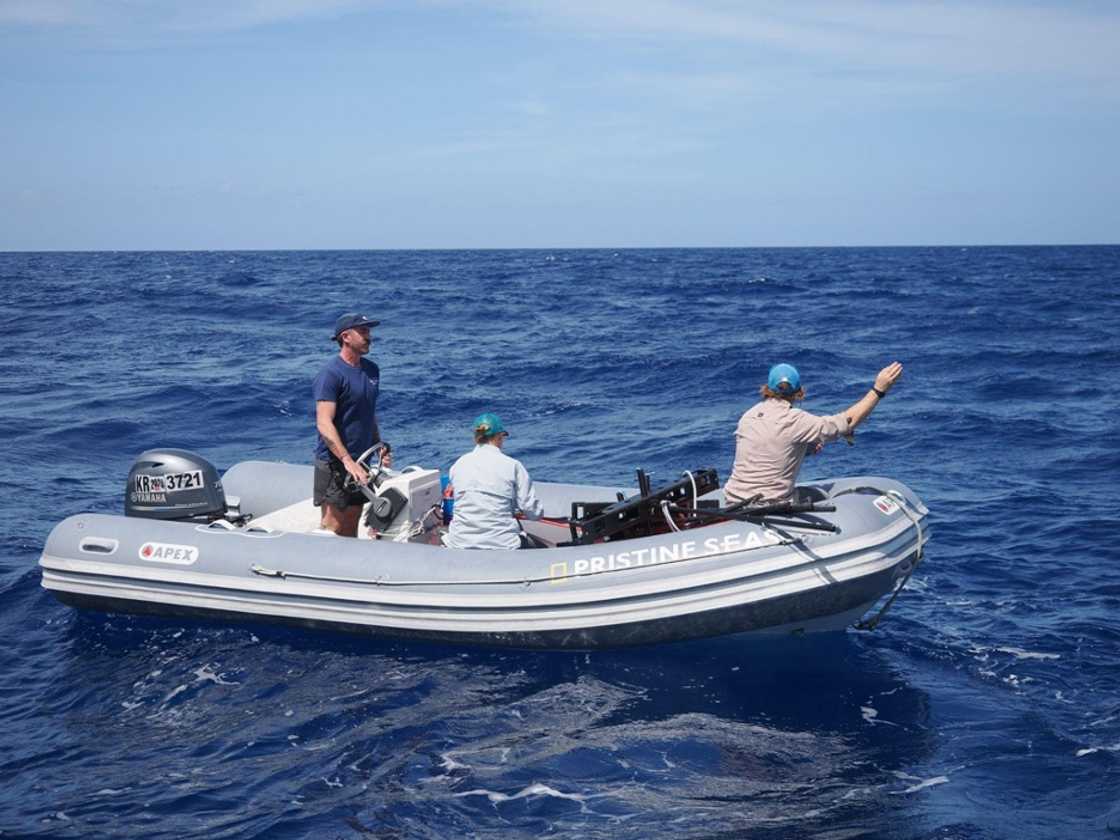
Source: UGC
Recent discoveries in marine biology and oceanography
Kat mentions a few of the most interesting findings or discoveries in recent years:
Scientists investigating hydrothermal vents in the southeastern Pacific Ocean recently found worms, snails, and other marine invertebrates living within small cavities underneath the seafloor.
New species are also regularly being discovered in the deep sea: Scientists recently discovered 50 new deep-sea species living on a ridge of underwater mountains between Rapa Nui and Chile during a single expedition.
A recent exciting finding for our team was the discovery of the world’s largest coral in the Solomon Islands during our scientific expedition in October. This coral is 34 m wide, 32 m long, and 6 m tall. It is larger than the average blue whale, which is the world’s largest known animal! It has been estimated that this coral is about 300 years old. The discovery of mega corals like this one is exciting for scientists because it offers hope that certain species of corals may be able to survive warming ocean temperatures.
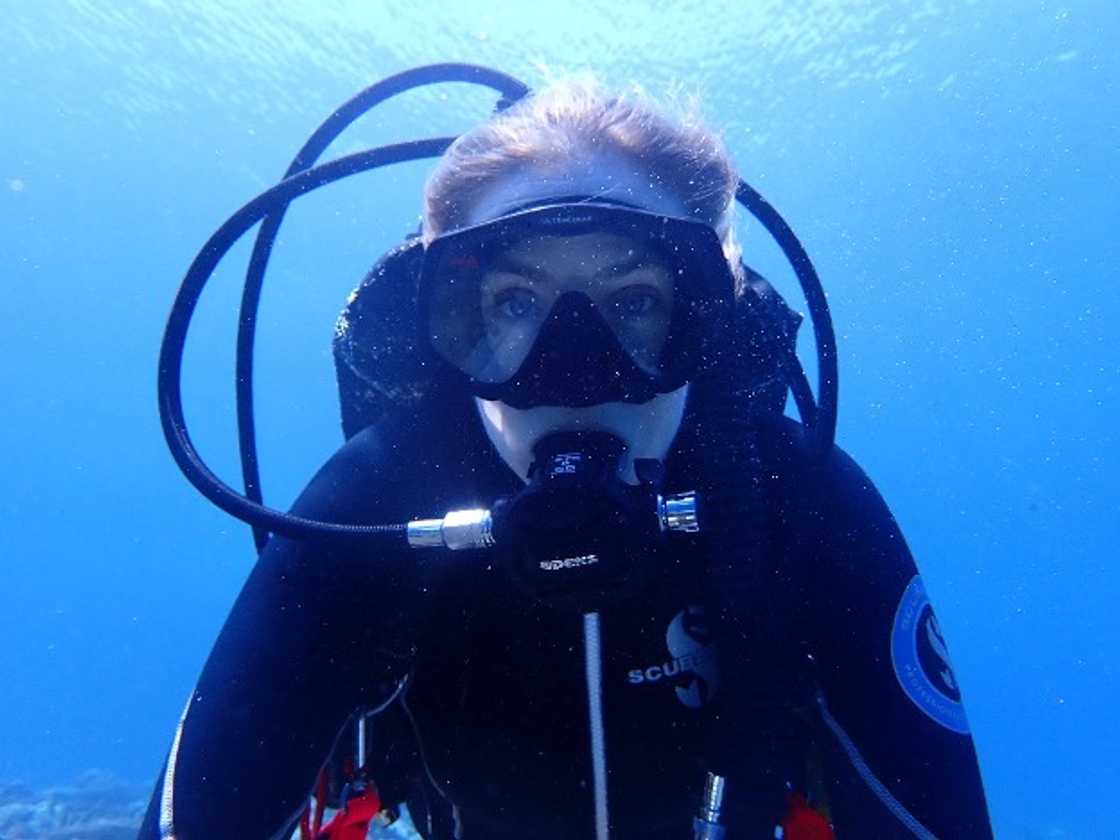
Source: UGC
Rarest and most unique creatures in the ocean
Kat points out the following rarest creatures in the ocean and explains why they are unique:
- Sawfish
This is a type of ray that used to be quite common in many parts of the world but is unfortunately now critically endangered because of habitat loss and overfishing. Their most distinctive feature (from which they get their name) is the saw-like extension of their skull — called a rostrum — that has a row of teeth on either side. Sawfish have been around for millions of years, and play an important role in many cultures around the world.
- Horseshoe crab
These may not be among the rarest marine creatures, but they’re certainly unique! Though they’re called crabs, they’re more closely related to spiders and they’ve been around for 450 million years. A very distinctive feature is that their blood appears to be blue due to the presence of the element copper (Cu). Our blood (and that of other mammals) is red due to the presence of the element iron (Fe).
How deep is the ocean?
Kat said the deepest point in the ocean is found in the Mariana Trench in the southwest of Guam. She explains further:
The maximum known depth (10,984 m) is found in a portion of the trench called Challenger Deep. The distance from the bottom of Challenger Deep to the ocean’s surface is more than four times the height of Chappal Waddi (2,419 m), the highest mountain in Nigeria! Though the deepest point in the ocean is nearly 11,000 m, most of the ocean is quite a bit shallower — scientists estimate the average depth of the ocean to be less than 4,000 m.
She also mentioned that scientists do face challenges when exploring the ocean depths such as high pressures, corrosive saltwater, and complete darkness. Kat said:
Salt water is much heavier than air, so everything below sea level is subjected to much higher pressures. At sea level, the entire Earth’s atmosphere presses down on our bodies with about 14.6 pounds per square inch of pressure. If we were to climb up a 10 m tall hill, the air pressure would barely change.
However, for every 10 m we go deeper in the ocean, the weight of the water causes the pressure to double! At 1000 m deep, the pressure is 100 times greater than the pressure at sea level! This means that any equipment scientists use to explore the ocean must be able to withstand higher pressures.
Saltwater is also very corrosive, so all of the gear scientists use to explore the ocean must be made out of certain materials so they don’t disintegrate! If those challenges weren’t enough, scientists working in the deep sea must also deal with near-freezing temperatures and complete darkness.
Facts about the Pacific Ocean
What fun facts about the ocean do you know? Here are exciting facts about the Pacific Ocean that will leave you admiring how amazing it is.
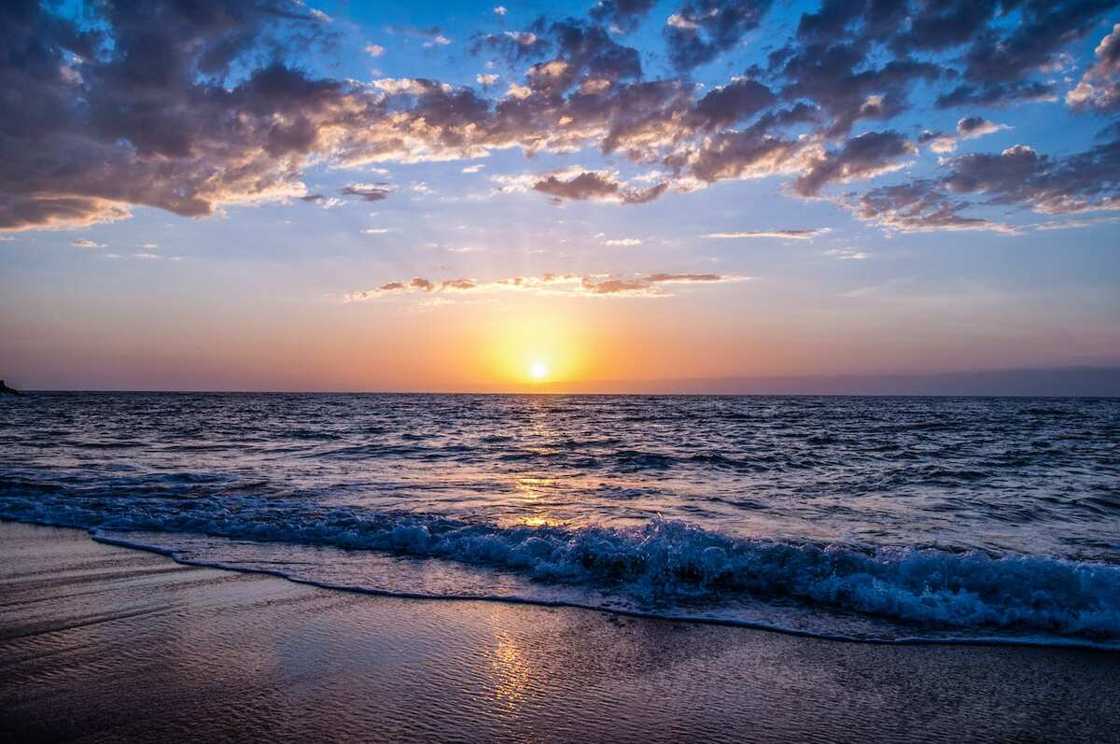
Source: UGC
- It was named by the Portuguese explorer Ferdinand Magellan. Pacific means peaceful or tranquillity. It was initially called the Sea of Magellan.
- It has the tallest underwater mountain. The underwater mountain Mauna Kea is much taller than the highest mount on land, Mount Everest.
- The deepest part of the ocean is the Mariana Trench. It is approximately 10,984 meters deep.
- The world’s longest reef, The Great Barrier Reef, is in the Pacific Ocean.
- The Ring of Fire is in the ocean. It is a tectonic belt of volcanoes and earthquakes.
- It is estimated that the ocean shrinks by an inch every year. This is due to the movement of tectonic plates.
- It is the largest ocean in the world, covering 63.8 million square miles. It is also the deepest ocean.
Facts about the Atlantic Ocean
After the Pacific Ocean comes the Atlantic Ocean in terms of size. Since ancient times, much has been discovered about it through exploration and scientific research. Here are things you should know about it.
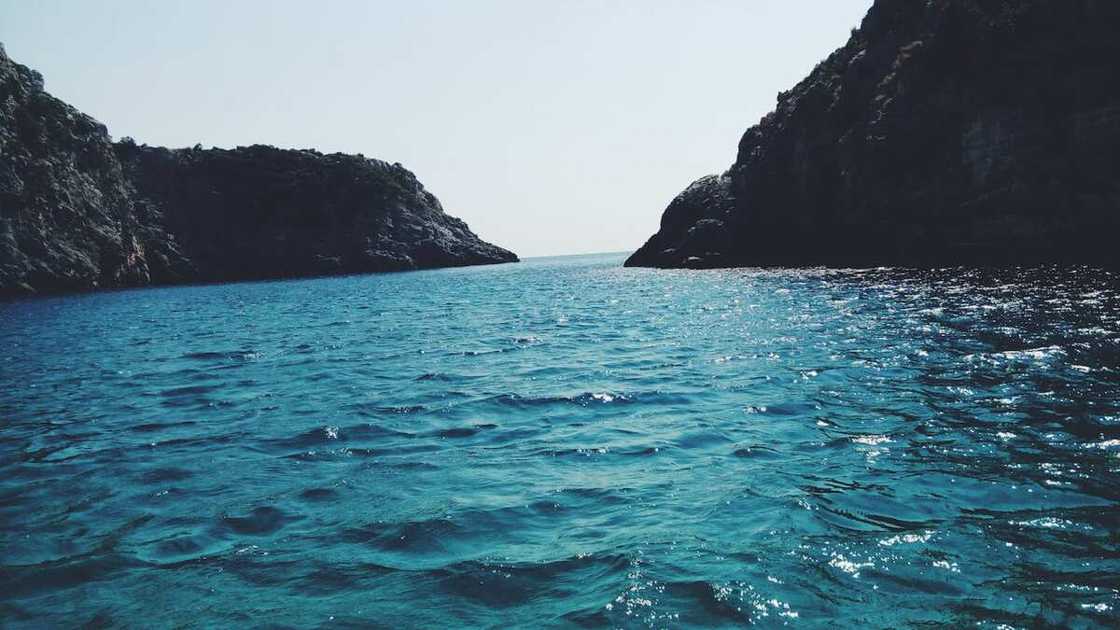
Source: UGC
- It is 106.5 million square kilometers, covering 20 percent of the Earth.
- Its name is derived from Atlas, a great titan in Greek mythology.
- The equator divides it into the North Atlantic and the South Atlantic.
- Its deepest point is the Milwaukee Deep at 27,493 feet.
- It is connected to every ocean on the Earth.
- The famous Bermuda Triangle is in the ocean.
- The RMS Titanic sank into the ocean in 1912.
- It was the first ocean to be crossed by ship.
How does the ocean impact climate and weather?
Kat also said the ocean plays a really important role in helping to regulate Earth’s climate and drive weather patterns. She explains:
One way it does this is by storing solar radiation from the sun, which helps to keep our planet warm enough for us to live on. Think of a pool on a hot sunny day - during the day while the sun is out, the ground may be warmer than the pool water.
However, once the sun goes down and it gets cooler, the ground cools off pretty quickly but the water will stay warm for quite a while. This is because water stores heat quite well – better than air or land. Since the ocean is so large, it can store a huge amount of solar energy.
Because currents move ocean water all around the world, the heat stored in the ocean also gets moved around which helps to counteract the uneven distribution of solar radiation reaching Earth’s surface. If the ocean wasn’t able to help distribute the stored solar radiation, much less of the land on Earth would be habitable because it would be even hotter at the equator and colder towards the poles.
Many of our weather patterns are also driven by oceanic processes: when ocean water evaporates, it increases the temperature and humidity of the surrounding air which is how rain and storms are formed. Areas around the equator are particularly rainy because ocean evaporation is highest in this area.
FAQs
- Why are oceans blue? It is blue because water absorbs colors in the red part of the light spectrum, leaving colors in the blue part.
- Why are oceans salty? Ocean salt comes from rocks on land and seafloor openings.
- Why does the ocean glow at night? This phenomenon is observed when there is a lot of bioluminescence in the water. The bioluminescence is from an algae plankton bloom, which glows when disturbed by ocean waves.
- What is the difference between a sea and an ocean? Seas are smaller than oceans and are found where land meets the ocean.
- Which is the largest ocean in the world? The largest ocean is the Pacific Ocean, covering 165.2 million square kilometers.
- What does the ocean represent? It symbolizes stability as it barely changes in centuries.
- What emotion does the ocean give? The blue ocean color is associated with calmness and peace.
A lot is known about the oceans thanks to scientific research and explorations. However, only a small portion of the ocean has been explored, and therefore, a lot remains unknown about the ocean. The above facts about the ocean will increase your knowledge and help you appreciate the Earth’s largest physical feature.
Legit.ng recently published a list of the most famous rivers in the world. Rivers spread across the globe are vital sources of water for different ecosystems. They are also used for transportation and have served many communities worldwide.
Even though there are many rivers, some have stood out in many ways and are recognized worldwide. Some of the most famous rivers are familiars as they were frequently mentioned in your school days. Find out which rivers are famous and what makes them unique.
Source: Legit.ng

Muhunya Muhonji (Lifestyle writer) Muhunya is a graduate of Agricultural Economics from Egerton University, Class of 2014, with a passion for storytelling and content creation. Since joining Legit.ng as a writer in July 2021, he has covered diverse topics such as entertainment, technology, business, and biographies. His journalism journey has seen him complete multiple professional courses, including the AFP Digital Investigation Techniques course (2023), the Google News Initiative course (March 2024), and Fact-Checking and Research training (September 2024). Email: muhunyah@gmail.com

Mary Ugbodaga (Lifestyle Journalist) Mary Ugbodaga is a Legit.ng journalist with 7 years of experience in journalism and media communications. She graduated from Covenant University in 2018 with a Bachelor's degree in Mass Communication/Media Studies. Mary previously worked as a journalist at TheCable, CNBC AFRICA, Voice of Nigeria, KPMG Nigeria. Email: mary.ugbodaga@corp.legit.ng.

